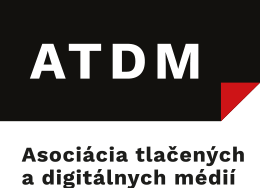Print will still be relevant, says Mediahuis
Once, newspapers and journalism were synonymous. “But that has changed dramatically over the last 15 years,” Paul Verwilt, COO, Mediahuis, Belgium told the participants at WAN-IFRA World Printer’s Summit.
Although printed newspapers are still relevant, websites and digital products such as newsletters, audio and video have become extremely important, according to Verwilt.
Today, the publishing medium for news has become irrelevant. “The important thing for us is that we reach the maximum number of people the right way at the right time,” he said.
Rightly so, the publisher has been active on social media for the last few years to reach more people, especially the youngsters.
Mediahuis has around 1.7 million subscribers across six countries, of which 57 percent are print and the rest are digital. It has more than 30 news brands. In 2022, 70 percent of its gross margin was attributed to print publication (in terms of B2C revenues).
The brand’s internal analysis shows that print will still be relevant in 2030, but the share would likely go down to 30 percent from the existing 70 percent.
Keeping printing and distribution costs under control
Scaling and cross-company consolidation is likely to keep printing costs under control, Verwilt said.
These costs can be further reduced by:
Automation of print processes: Digital-first workflows in the newsroom, automated print layout, and automation in printing facilities.
Widen the printing window: This means tweaking the closing times for newspapers and finding ways to increase the printing window to improve the productivity of the printing facility.
Reduce stops: This includes pagination uniformity, cutting editions and reducing newspaper size/volumes
Consolidation and cross-publisher cooperation
Distribution, on the other hand is complicated, according to Verwilt. “The cost of distribution per copy would likely double. If at some point we stop distributing newspapers to some areas, the reason would most likely be the cost and not demand,” he said.
How FAZ is keeping the boat afloat
“In our case, print circulation is going down. However, 90 percent of our subscribers are digital, which is stabilising our operations in print as well,” said Carsten Knop, Publisher of FAZ Digital Products, Frankfurter Allgemeine Zeitung, Germany.
FAZ’s print circulation is almost half of what it used to be 10 years ago, and the downturn is accelerating. “There’s nothing you can do to stop that in any regard,” Knop said.
The publisher’s F+ app is its growth driver. It is the entry level digital subscription to unlock every article on the website. As of October 2022, it has crossed 120,000 subscriptions and is still growing.
“F+ is our life insurance and the product that keeps us up and running with a compounded annual growth rate of about 30 percent,” he added.
But there’s bad news. The publisher has to maintain this growth rate because print is deteriorating quickly. “Digital is profiting from print in a way that is unexpected because of those distribution problems Paul was talking about,” Knop said.
Last July, FAZ had to get its closing time moved to 4.00 pm and this deadline made it possible to provide its customers e-papers starting 6.00 pm, which is a really early and has the entire metro section of Frankfurt inside.
Learning to talk to younger audiences
FAZ has also invested in TikTok. If the content does well, it will have more than one million plays on the platform.
So why are they doing this? It’s not for the subscriptions on TikTok. “I’m absolutely sure that our brand won’t say anything to a 20-year-old in Germany if we weren’t on those channels. If they consider buying a digital subscription or a printed paper, they need to know about the brand,” Knop said.
A few years ago, the publisher tried its hand at podcasts, which now have 770,000 plays a month. “We need it to spread the word of our brand,” he said.
FAZ introduced news quizzes on its website to attract more readers, considering the news fatigue most people are experiencing.
To make the brand look younger, FAZ has been collaborating with two big public stations in Germany – ARD and ZDF. These stations also have YouTube channels for younger audiences called Funk, and FAZ produces videos for them.
The company is also planning to launch a multimedia edition of its subscription tier, different from the tiers it currently has, and investments are being made in that direction. It is also planning to relaunch its website in Spring 2024 to make it more attractive and responsive.
“As long as we are successful in this [digital] side of our operation, we will be able to print newspapers for the next 5-10 years,” he said.
The post What’s next for printed newspapers? Insights from Mediahuis and FAZ appeared first on WAN-IFRA.
